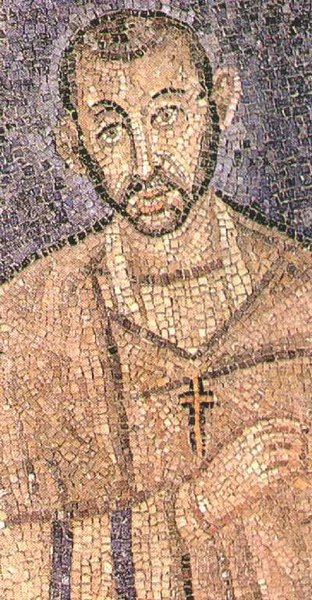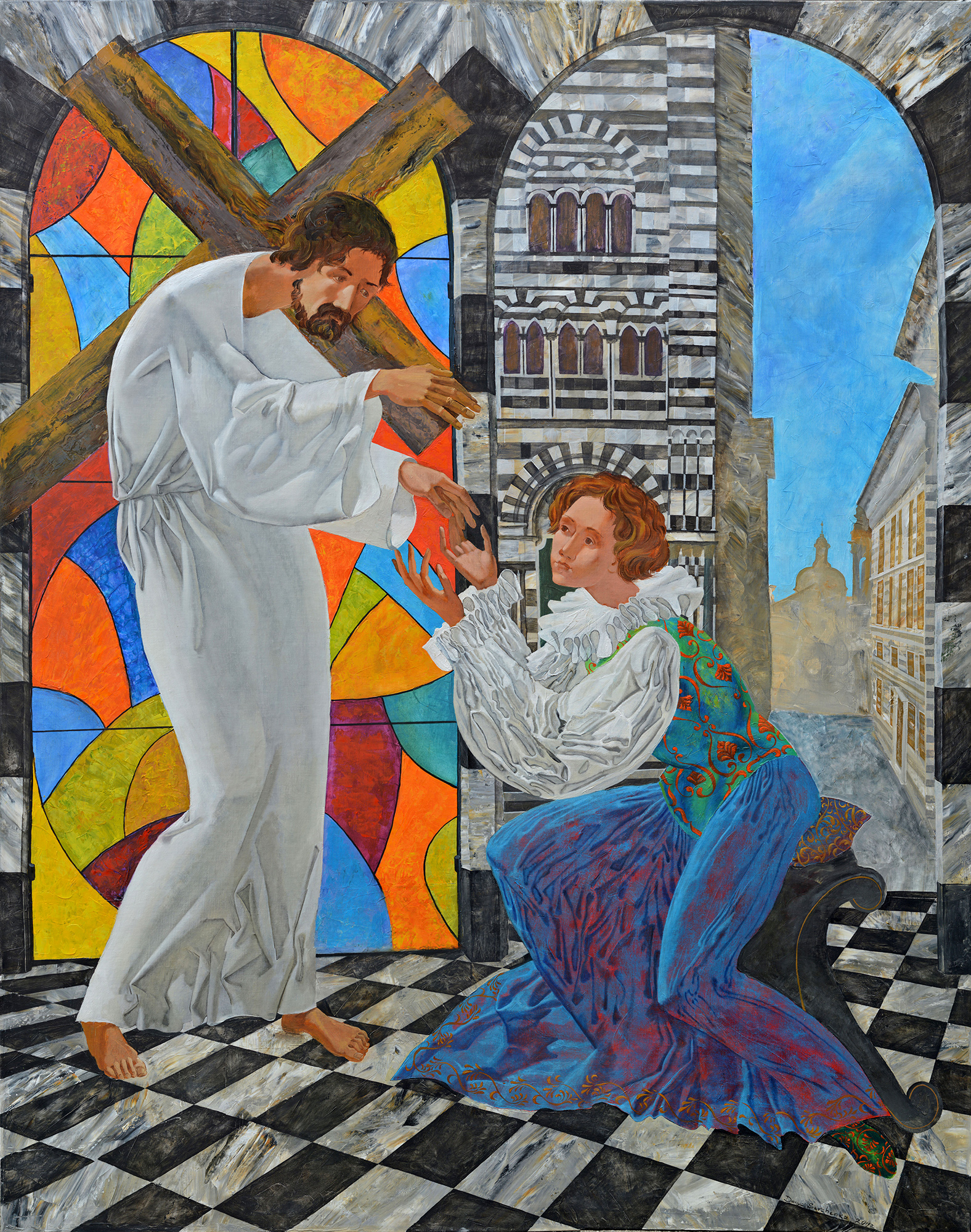|
Ambrosians
Ambrosians are members of one of the religious brotherhoods which at various times since the 14th century have sprung up in and around Milan. In the 16th century, a sect of Anabaptist Ambrosians was founded. Orders Only the oldest of the Catholic Ambrosians, the Fratres S. Ambrosii ad Nemus, had anything more than a very local significance. This order is known from a bull of Pope Gregory XI addressed to the monks of the church of St Ambrose outside Milan. This further references Herzog-Hauck's ''Realencyklopadie'', i. 439. Saint Ambrose, Bishop of Milan, certainly did not found religious orders, though he took an interest in the monastic life and watched over its beginnings in his diocese, providing for the needs of a monastery outside the walls of Milan, as Saint Augustine recounts in his '' Confessions''. Ambrose also made successful efforts to improve the moral life of women in the Milan of his time by promoting the permanent institution of Virgins, as also of widows. His ex ... [...More Info...] [...Related Items...] OR: [Wikipedia] [Google] [Baidu] |
Anabaptist Ambrosians
The name Ambrosians is given to a 16th-century Anabaptist sect, as also to various Catholic religious orders. This sect laid claim to immediate communication with God through the Holy Spirit. Basing their theology upon the words of the Gospel of John 1: 9 -- "There was the true light which lighteth every man, coming into the world"—they denied the necessity of any priests or ministers to interpret the Bible. Their leader Ambrose went so far as to hold further that the revelation which was vouchsafed to him was a higher authority than the Scriptures. The doctrine of the Ambrosians, who belonged probably to that section of the Anabaptists known as Pneumatici, may be compared with the "Inner light" doctrine of the Quakers Quakers are people who belong to a historically Protestant Christian set of denominations known formally as the Religious Society of Friends. Members of these movements ("theFriends") are generally united by a belief in each human's abil .... References ... [...More Info...] [...Related Items...] OR: [Wikipedia] [Google] [Baidu] |
Ambrosian Rite
The Ambrosian Rite is a Catholic Western liturgical rite, named after Saint Ambrose, a bishop of Milan in the fourth century, which differs from the Roman Rite. It is used by some five million Catholics in the greater part of the Archdiocese of Milan (excluding Monza, Treviglio and Trezzo sull'Adda), in some parishes of the Diocese of Como, Bergamo, Novara, Lodi, and in the Diocese of Lugano, Canton of Ticino, Switzerland. The Ambrosian Rite has risked suppression at various points in its history. It was reformed after the Second Vatican Council (Pope Paul VI belonged to the Ambrosian Rite, having previously been Archbishop of Milan). In the 20th century, it also gained prominence and prestige from the attentions of two other scholarly Archbishops of Milan: Achille Ratti, later Pope Pius XI, and the Blessed Ildefonso Schuster, both of whom were involved in studies and publications on the rite. History The Church of Milan's own liturgy is named ''Ambrosian'' after its patr ... [...More Info...] [...Related Items...] OR: [Wikipedia] [Google] [Baidu] |
Milan
Milan ( , , Lombard: ; it, Milano ) is a city in northern Italy, capital of Lombardy, and the second-most populous city proper in Italy after Rome. The city proper has a population of about 1.4 million, while its metropolitan city has 3.26 million inhabitants. Its continuously built-up urban area (whose outer suburbs extend well beyond the boundaries of the administrative metropolitan city and even stretch into the nearby country of Switzerland) is the fourth largest in the EU with 5.27 million inhabitants. According to national sources, the population within the wider Milan metropolitan area (also known as Greater Milan), is estimated between 8.2 million and 12.5 million making it by far the largest metropolitan area in Italy and one of the largest in the EU.* * * * Milan is considered a leading alpha global city, with strengths in the fields of art, chemicals, commerce, design, education, entertainment, fashion, finance, healthcar ... [...More Info...] [...Related Items...] OR: [Wikipedia] [Google] [Baidu] |
Anabaptism
Anabaptism (from Neo-Latin , from the Greek : 're-' and 'baptism', german: Täufer, earlier also )Since the middle of the 20th century, the German-speaking world no longer uses the term (translation: "Re-baptizers"), considering it biased. The term (translation: "Baptizers") is now used, which is considered more impartial. From the perspective of their persecutors, the "Baptizers" baptized for the second time those "who as infants had already been baptized". The denigrative term Anabaptist, given to them by others, signifies rebaptizing and is considered a polemical term, so it has been dropped from use in modern German. However, in the English-speaking world, it is still used to distinguish the Baptizers more clearly from the Baptists, a Protestant sect that developed later in England. Compare their self-designation as "Brethren in Christ" or "Church of God": . is a Protestant Christian movement which traces its origins to the Radical Reformation. The early Anabaptists ... [...More Info...] [...Related Items...] OR: [Wikipedia] [Google] [Baidu] |
Napoleon I
Napoleon Bonaparte ; it, Napoleone Bonaparte, ; co, Napulione Buonaparte. (born Napoleone Buonaparte; 15 August 1769 – 5 May 1821), later known by his regnal name Napoleon I, was a French military commander and political leader who rose to prominence during the French Revolution and led successful campaigns during the Revolutionary Wars. He was the ''de facto'' leader of the French Republic as First Consul from 1799 to 1804, then Emperor of the French from 1804 until 1814 and again in 1815. Napoleon's political and cultural legacy endures to this day, as a highly celebrated and controversial leader. He initiated many liberal reforms that have persisted in society, and is considered one of the greatest military commanders in history. His wars and campaigns are studied by militaries all over the world. Between three and six million civilians and soldiers perished in what became known as the Napoleonic Wars. Napoleon was born on the island of Corsica, not long af ... [...More Info...] [...Related Items...] OR: [Wikipedia] [Google] [Baidu] |
Charles Borromeo
Charles Borromeo ( it, Carlo Borromeo; la, Carolus Borromeus; 2 October 1538 – 3 November 1584) was the Archbishop of Milan from 1564 to 1584 and a cardinal of the Catholic Church. He was a leading figure of the Counter-Reformation combat against the Protestant Reformation together with Ignatius of Loyola and Philip Neri. In that role he was responsible for significant reforms in the Catholic Church, including the founding of seminaries for the education of priests. He is honoured as a saint by the Catholic Church, with a feast day on 4 November. Early life Borromeo was a descendant of nobility; the Borromeo family was one of the most ancient and wealthy in Lombardy, made famous by several notable men, both in the church and state. The family coat of arms included the Borromean rings, which are sometimes taken to symbolize the Holy Trinity. Borromeo's father Gilbert was Count of Arona, Piedmont, Arona. His mother Margaret was a member of the Milan branch of the House of Medi ... [...More Info...] [...Related Items...] OR: [Wikipedia] [Google] [Baidu] |
Catharine Fieschi Adorno
Catherine of Genoa (Caterina Fieschi Adorno, 1447 – 15 September 1510) was an Italian Roman Catholic saint and mystic, admired for her work among the sick and the poor and remembered because of various writings describing both these actions and her mystical experiences. She was a member of the noble Fieschi family,Oxford Dictionary of the Christian Church (Oxford University Press 2005 ), article ''Catherine, St, of Genoa'' and spent most of her life and her means serving the sick, especially during the plague which ravaged Genoa in 1497 and 1501. She died in that city in 1510. Her fame outside her native city is connected with the publication in 1551 of the book known in English as the ''Life and Doctrine of Saint Catherine of Genoa''. She and her teaching were the subject of Baron Friedrich von Hügel's classic work ''The Mystical Element of Religion'' (1908). Early life Catherine was born in Genoa in 1447, the last of five children. Catherine's parents were Jacopo Fi ... [...More Info...] [...Related Items...] OR: [Wikipedia] [Google] [Baidu] |






